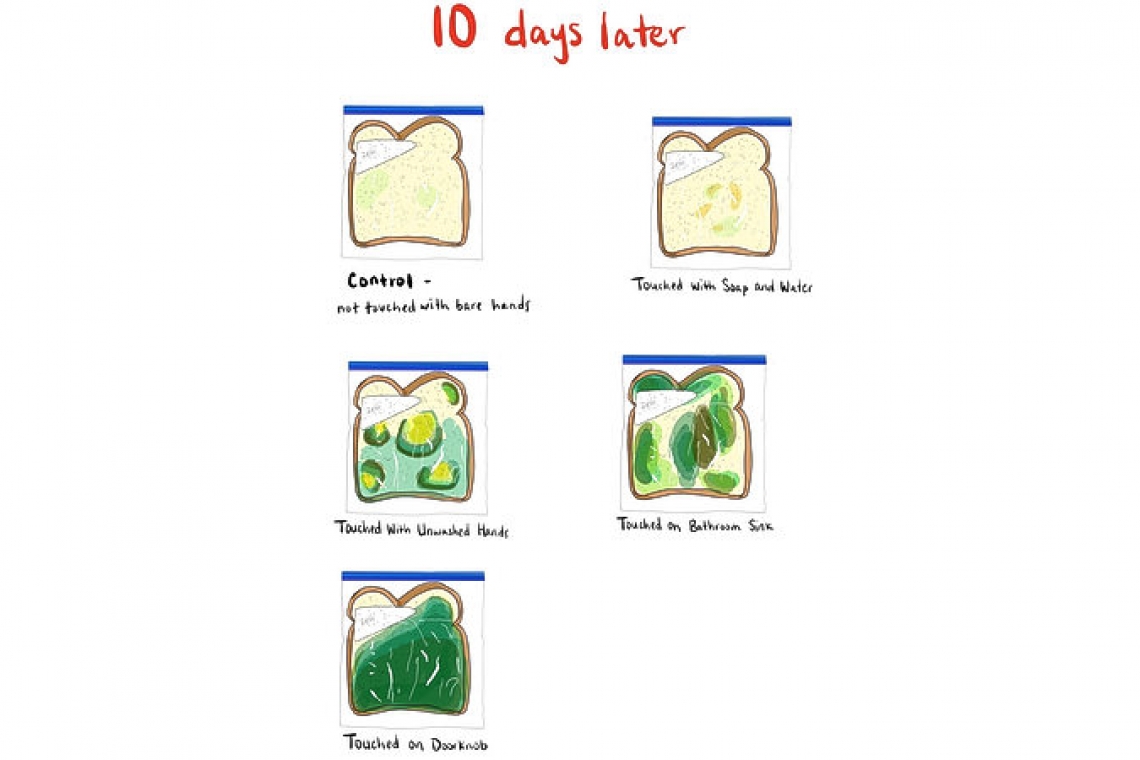Exploring Health with Bamba
Authors: Bamba, and Beatriz Finkel-Jimenez, PhD of the AUC School of Medicine. Illustration by Cristina Hernandez of AUC.
Hey friends! It’s Bamba here – and we have lots to learn today! Last time, Wali left for his new journey in medical school. What did we do? We learned about germs and that germs can make us sick. We also learned how to keep our hands clean. Today, we test the reason for keeping our hands clean with a germs experiment! I hope you are as excited as I am!
In the last KIDS Herald edition, we learned that germs are microscopic. That means we cannot see them without a microscope that makes the germs big enough to see them. Today, we are going to answer a question about germs: Where do germs hide the most? You can do this experiment at home or at school with the permission of your parent or teacher.
Okay, let’s do this!
First, we predict an answer to the question of where we will find the most germs. Another name for a prediction is “hypothesis”. Our hypothesis for this experiment is that we will find more germs in the bathroom sink than on our hands or a doorknob.
We will also include a “control” – a piece of bread with no treatment (except the damp paper towel). After 10 days, growth should be less in this one. Bread and water are not sterile so there is going to be lots of funky stuff growing.
We will need the following materials for this experiment:
- 5 slices of bread
- 5 transparent Ziploc bags
- 5 damp paper towels
- Time
Now we will make a list of steps to follow to perform the experiment. The list of steps is called the “procedure”.
Step 1: Label each Ziploc bag with its own name: control, unwashed hands, washed hands, bathroom sink, doorknob.
Step 2: Put a small amount of water on each paper towel to make it slightly damp. Fold and place a towel in each Ziploc bag.
Step 3: Using a clean paper towel to cover the bread so you do not touch it with your hand, place the bread in the Ziploc bag labelled “Control” and seal the bag.
Step 4: Without washing your hands, rub them on the first slice of bread while you count to 10. Then place the bread in the Ziploc bag labelled “unwashed hands” and seal the bag.
Step 5: Wash your hands with soap and water while singing Twinkle Twinkle Little Star (that takes 20 seconds).
Step 6: Dry your hands – make sure your hands are completely dry.
Step 7: Rub one piece of bread in your hands while you count to 10. Place it in the Ziploc bag labelled “washed hands” and seal the bag.
Step 8: Rub the next slice on the bathroom sink while you count to 10. Place the bread in the Ziploc bag labelled “bathroom sink” and seal the bag.
Step 9: Rub the last slice on a doorknob while you count to 10. Place the slice in the Ziploc bag labelled “doorknob” and seal the bag.
Put all five bags aside for 10 days.
Who is excited to see the results! I know I am! I know you are wondering: “How will we know which place has the most germs?”
That’s a great question! After 10 days, we will see how much mould (germs or bacteria) have grown on the bread. The bread with the most mould will tell us which place had the most germs! This should help us see how important it is to wash our hands!
So, there you have it! In 10 days, we will see what science says about these sneaky germs and how hand hygiene plays a role in it!
Until next time friends…
See you later!
- Bamba







